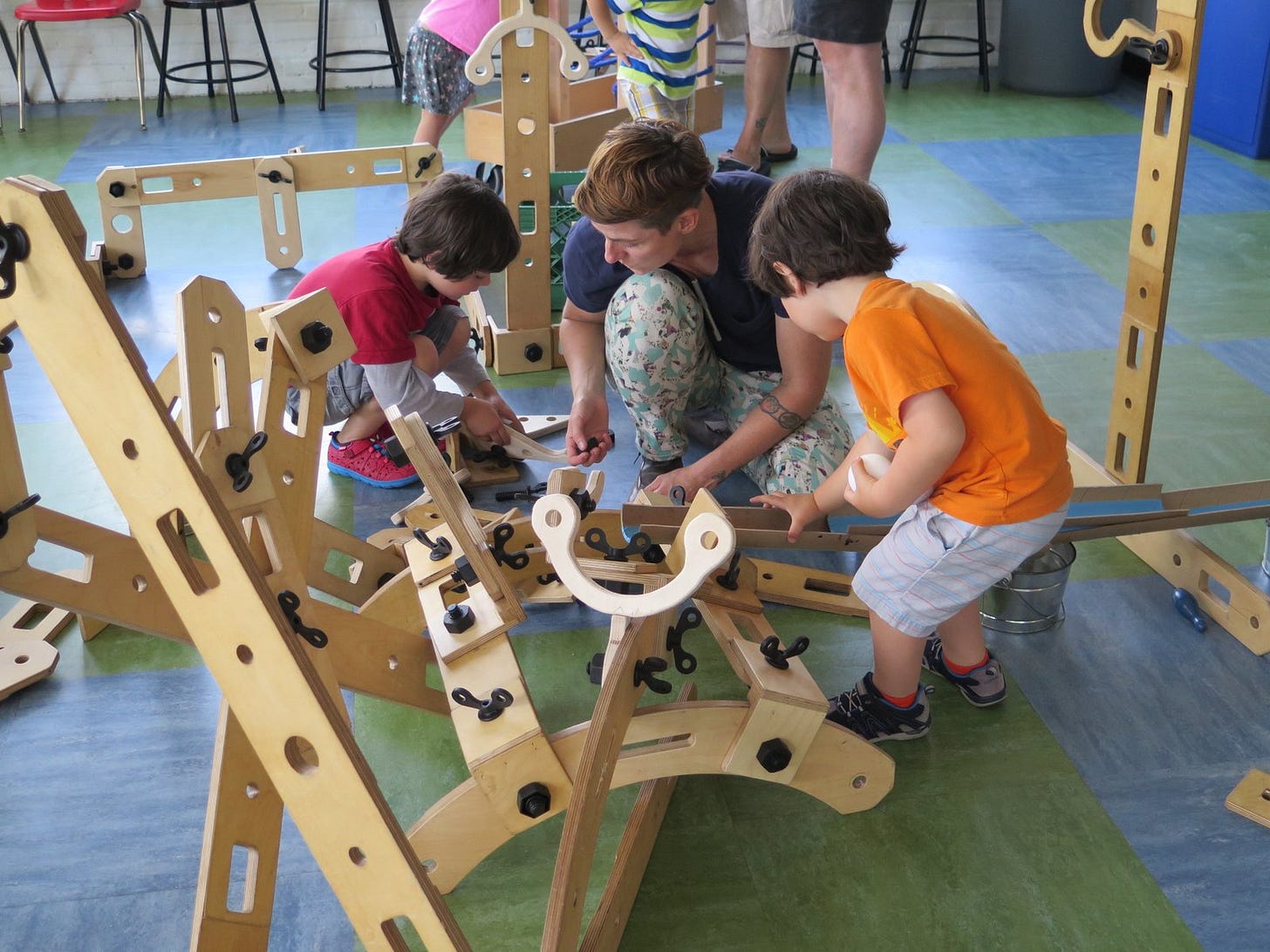Fab Fridays 7: Less is More
Lessons from Finland
Hey all!
Greetings from Panama.
Lately I’ve been thinking a lot about the absurd amount of time that children spend in school and what I’d describe as the unofficial motto of our current education system: 'work more, work harder, and test often.'
For years, we have been conditioned to believe that children need more tests, more homework, more supervision, longer school days, longer school years…
What most people fail to see is that long school days are eating into precious time that would otherwise be available for kids to explore their curiosities and develop original ideas.
This week I wrote a tweet about a principle behind Finland’s Educational philosophy, “Less is More”:

In Finland, kids don’t start school until age 7. They have fewer school days per year and fewer lessons in a school day, spend fewer hours at school, and get far less homework than kids in most other countries.
They really believe and live by the mentality of less is more.
This article, written by a teacher, highlights 11 ways Finland’s Education System shows us that “Less is More.”
This week’s favorite resources
The past belonged to assembly line workers and rule-followers. The future belongs to passion-driven learners and creative thinkers
Roughly ⅔ of today’s grade-school students will end up doing work that hasn’t been invented yet.
Our ability to think and act creatively is more important than ever before.
In light of this, I’ve been exploring new technologies and innovative strategies for engaging young people in creative learning experiences. Here are some resources that I’ve come across and that are guiding my mission:
1) Lifelong Kindergarten by Mitchel Resnick. I’m reading this gem that explores both the why and the how of creative thinking. The book builds the case for why creative thinking is so important in today’s world and shares strategies for how to help young people develop as creative thinkers. I’m excited to share more of what I learn as I keep reading.
2) Design for Play by Cas Holman: Netflix Abstract: The Art of Design
“When I design toys I want children to create from their imagination rather than following instructions. My work as a designer is to give them these tools so that they are free to imagine, explore ideas, and invent new things.”— Cas Holman
I recently watched Cas Holman’s episode on Netflix (Season 2, Episode 4) and was inspired by her work designing for play, education, creativity, and childhood.
Rooted in the belief that imagination and play are essential parts of childhood, Holman spent the past 18 years designing and manufacturing “tools for imagination”: wooden play pieces, ropes and pulleys, nuts and bolts.

Cas builds toys and manipulable parts and pieces that inspire constructive play, imaginative forms, and cooperative interactions. Her work can be found in schools, museums, and playrooms around the globe.
I truly believe learning should be more about the creative process and less about standard academics, and admire people like Cas that advocate for children and play.
Cas Holman gets most of her inspiration from watching kids play. She is good at observing children and recognizing what they want and need. Cas gets it. The majority of adults are too focused on curriculum, tests scores, and standards, and sometimes forget the main reason why schools even exist: children.
3) The future of education does not look like you think it does. Buckle up and check out this tweet storm.
The Internet is the best networking tool.

If you asked me a few months ago if I believed in making friends online, I would have probably said no. That was Ana pre becoming a citizen of the internet.
It’s so clear to me now that the internet facilitates interactions and friendships that might otherwise be inconceivable.
Last week I got to meet two incredible individuals with big dreams, strong work ethics, and energies that are contagious. I spent the morning with David Perell and Nick Maggiulli bouncing off exciting ideas and exploring New York City. It felt like we had known each other for years.
I can’t wait to use this super-tool to transform what teaching and learning means for younger generations.
Until next week!
Ms. Fab

